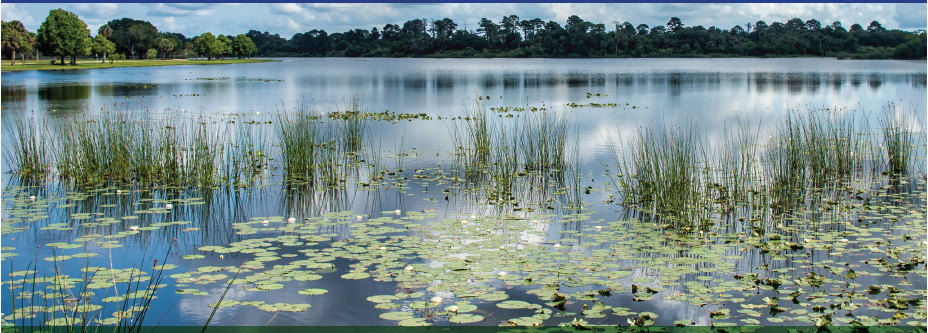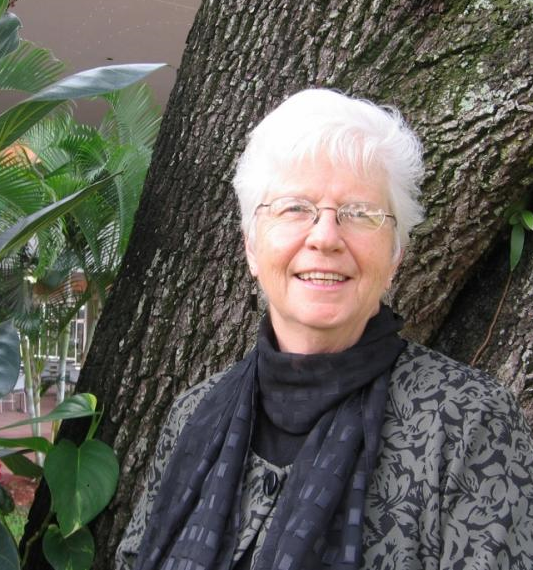Human ethics evolved over time because individual human survival depends on being a member of a well-integrated cooperative community. Leopold went farther; he saw that ecology had enlarged “the boundaries of the community to include soils, waters, plants, and animals,” giving rise to a new ecological ethic which “changes the role of Homo sapiens from conqueror of the land-community to plain member and citizen of it. It implies respect for his fellow members and also respect for the community as such.”(3) As citizens of biotic communities, we have an ethical obligation to act consistent with the long-term welfare of those communities.
In our time, against the backdrop of a global mass extinction caused by human activity, the moral imperative to protect ecosystems which harbor much of the planet’s remaining biodiversity(4) is even stronger.
There is no doubt that North American freshwater ecosystems are seriously threatened. Already, at least 123 species of freshwater fishes, mollusks, crayfishes and amphibians have become extinct. It is has been estimated that the extinction rate for U.S. freshwater animals is five times that of terrestrial animals.
The southeastern United States is a hotspot for aquatic biological diversity. The Southeast, for example, harbors 493 species of fish (62% of all U.S. species), at least 269 species of mussel (91% of all U.S. species), and 241 species of dragonflies and damselflies (48% of all North American species). The Southeast also harbors over two-thirds of North America’s 405 species and subspecies of crayfish, more aquatic reptiles than any other region (30 species of aquatic turtle and 17 species of aquatic snake), and more amphibian species than any other region, with 178 recognized species and new species continuing to be described.
Within the Southeast, one area stands out—the Suwannee River and its tributaries, including the Ichetucknee and Santa Fe Rivers, are among the few river systems in the United States that are unimpeded, undeveloped and relatively unpolluted. The springs and spring runs which feed the Suwannee enrich the biodiversity of this river system still further.(5) The Ichetucknee and Santa Fe are home to three species listed as endangered by the Fish & Wildlife Service: the West Indian Manatee, the Gulf Sturgeon, and the Oval Pig-toed Mussel.
Few places on Earth have as many turtle species living together; 28% of all freshwater turtles in North America live in the Santa Fe, including the newly described Suwannee Alligator Snapping Turtle, Macrochelys suwanniensis.(6) The spring-influenced areas of the lower Santa Fe support twice as many turtles as blackwater areas of the upper Santa Fe.
An additional component of this biodiversity is the fauna of the submerged cave habitats associated with the springs. The Suwannee spring system contains the greatest diversity of obligate subterranean decapod crustaceans in the world.
The Ichetucknee and Santa Fe, even altered as they are today, remain priceless reservoirs of the freshwater biodiversity which is under siege everywhere. It is our moral obligation to preserve the integrity, stability, and beauty of these rivers and their biotic communities.
Admittedly, the siltsnail has no economic value. It is not a keystone species. It does not draw visitors to the springs the way the manatees do. But we can’t protect the snail without protecting Coffee Spring, and Coffee Spring cannot be held inviolate without protecting the entire glorious Ichetucknee and the complex biotic community of which the snail is a part. That is the whole point: protecting the snail is all about preserving a unique and wonderful biotic community.
Aldo Leopold counseled that we should adopt the precautionary principle with respect to the many lifeforms we know very little about:
The last word in ignorance is the man who says of an animal or plant, “What good is it?” If the land mechanism as a whole is good, then every part is good, whether we understand it or not. If the biota, in the course of aeons, has built something we like but do not understand, then who but a fool would discard seemingly useless parts? To keep every cog and wheel is the first precaution of intelligent tinkering.(7)
Leopold correctly pointed out that like the siltsnail, “most members of the land community [in this case, the aquatic community] have no economic value” and he urged against inventing “subterfuges to give it economic importance.”(8) The economic argument becomes a trap: in the end, the case for the little snail is no different than the case for the river itself. If we, when asked, “What value is the river?” respond that the Ichetucknee generates X number of tourist dollars and Y number of local jobs, we will surely be told by our adversaries that a new destination resort with golf course and shopping mall or a glorified feedlot like Adena Springs/Sleepy Creek Ranch will generate X+1 dollars and Y+1 jobs.(9) If the snail and the Ichetucknee River are to be saved it will be because we convince our fellow citizens that it is the right thing to do, not because of economic expediency.
The first step toward moving toward a land ethic similar to the one described by Leopold is for a culture to recognize that the loss of biodiversity is a communal harm. The overwhelming number of species that comprise that biodiversity are not the top-of-the-foodchain predators, like tigers, wolves and sharks that humanity, as a another top predator, identifies with, but the little things: the countless invertebrates which do not resemble our warm-blooded relatives, and which most of us have a hard time cozying up to. Nonetheless, they are all fellow members, and often very important members, of the same community of life.
In any struggle, there comes a moment when the question is “What side are you on?” Leopold put it this way: “There are some who can live without wild things and some who cannot.”(10) I might rephrase that: there are some of us who don’t care whether our rivers are filled with an incredible diversity of life from tiny snails to huge manatees, and some of us who cannot imagine living in Florida without the river Archie Carr called “the most beautiful landscape in the world.”(11) Those of us who fall in the latter category should be on the snail’s side.
(1) Considered by many as the father of wildlife management and of the United States’ wilderness system, Leopold was a conservationist, forester, philosopher, educator, writer and outdoor enthusiast. The land ethic was set forth in Leopold’s most famous book, A Sand County Almanac, and Sketches Here and There (1949).
(2) Aldo Leopold, A Sand County Almanac 224-5 (1949) (emphasis added). First published in 1949, Leopold’s formulation of land health may be a radical proposition, but it is not a new one.
(3) Id. at 203.
(4) “Biodiversity” is used here in its broadest sense to mean “the variety of life and its processes. It includes the variety of living organisms, the genetic differences among them, the communities and ecosystems in which they occur, and the ecological and evolutionary processes that keep them functioning, yet ever changing and adapting.” Reed Noss & Allen Cooperrider, Saving Nature’s Legacy 5 (1994).
(5) See R.A. Mattson, J.H. Epler, and M.K. Hein, Description of Benthic Communities in Karst, Spring-Fed Streams of North-Central Florida, 68(2) J. Kan. Entomological Soc’y 18, 31 (Supp.) (1995):
In north-central Florida, spring influence appears to be a major structuring force in stream communities. Increases in species richness in communities of benthic macroinvertebrates are associated with input of quantities of hard, alkaline spring water in the Suwannee River mainstem. Particular groups which show increases in species richness and/or relative abundance include ephemeropterans, molluscs, and oliochaetes. Causative factors postulated for these trends include increased buffering, higher nutrient availability, higher primary production rates and more constant (“predictable “) physical/chemical conditions. Stream periphyton communities undergo a shift in species composition with spring input; from communities dominated by green and blue green algae to those dominated by diatoms. The spring-influenced streams of Florida are one of the few Florida stream habitats to support substantial coverages of submergent aquatic vegetation.
(6) Travis M. Thomas, et al., Taxonomic Assessment of Alligator Snapping Turtles (Chelydridae: Macrochelys), with the Description of Two New Species from the Southeastern United States, 3786 Zootaxa 141–65 (2014). The lead author of the article describing the new species, Travis Thomas, said, “We have to be especially careful with our management of the Suwannee River species because this turtle exists only in that river and its tributaries. If something catastrophic were to occur, such as a chemical spill or something that affects the entire river, it could potentially devastate this species. The turtle is extremely limited by its habitat. All it has is this river and it has nowhere else to go.” Stephenie Livingston, Study Shows “Dinosaurs of the Turtle World” at Risk in Southeast Rivers, University of Florida News (Apr. 10, 2014), http://news.ufl.edu/2014/04/10/alligator-snapping-turtles/. Thomas also noted that “as large, apex predators, alligator snappers play an important role in the wild. A river ecosystem deprived of its alligator snappers would most likely experience negative implications.” Id.
(7) Aldo Leopold, Round River 145-46 (1993).
(8) Leopold, A Sand County Almanac, supra note 2, at 210.
(9) See George Monbiot, Reframing the Planet, Guardian, Apr. 22, 2014, available at http://www.monbiot.com/2014/04/22/reframing-the-planet/.
(10) Leopold, A Sand County Almanac, supra note 2, at vii.
(11) Archie Carr, A Naturalist in Florida: A Celebration of Eden 71 (1996). Is it enough to post Carr’s words on a bronze plaque at the entrance to Ichetucknee Springs State Park or do we need to take action to protect and preserve the landscape he loved?











